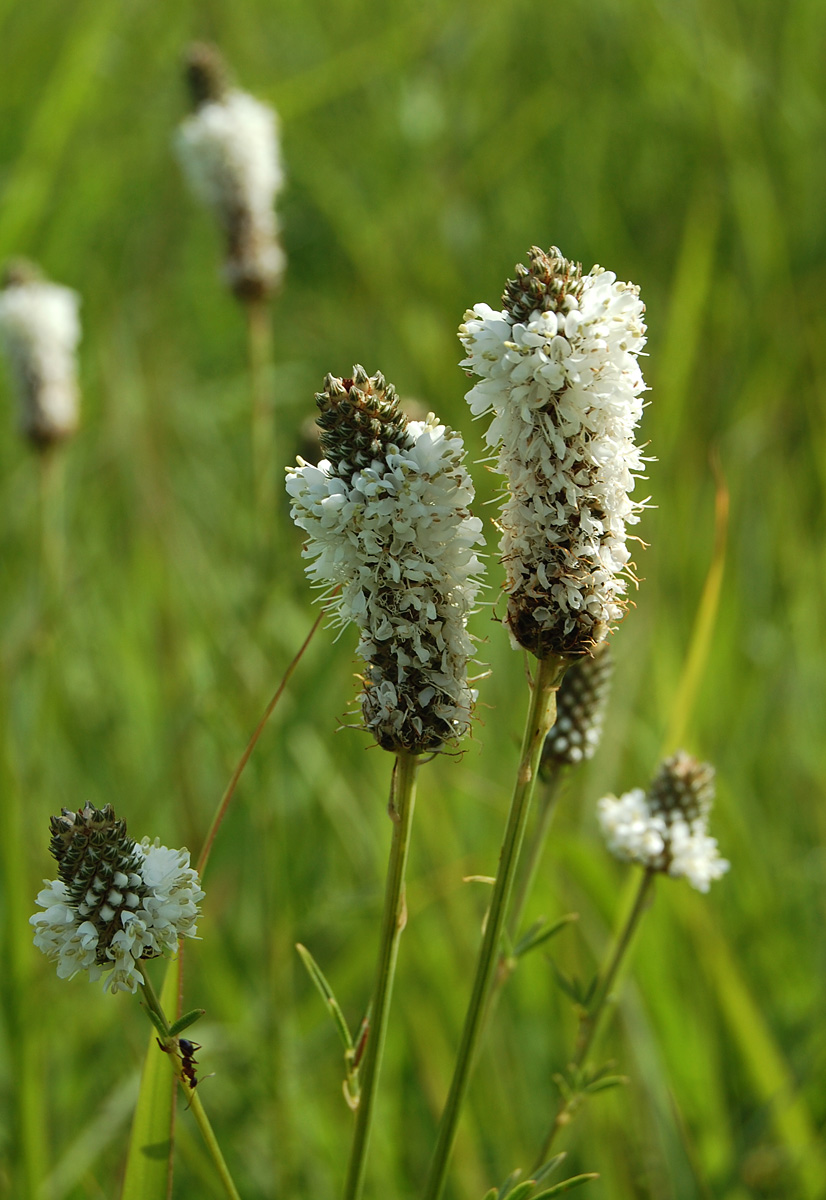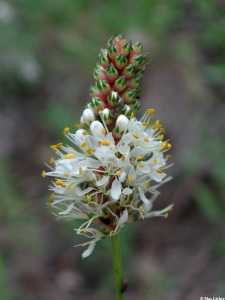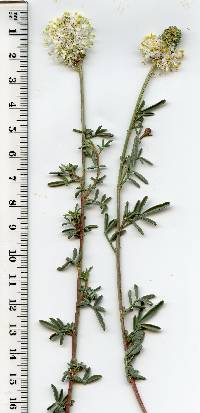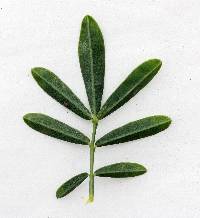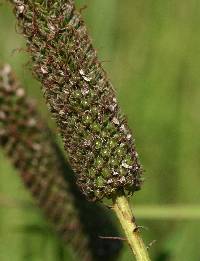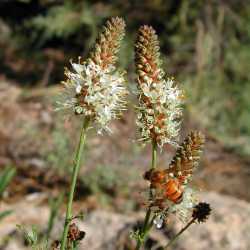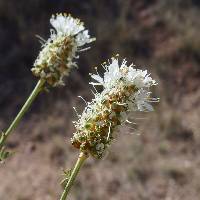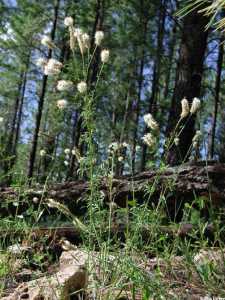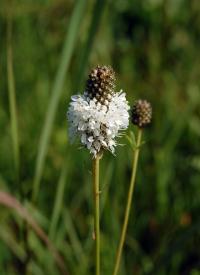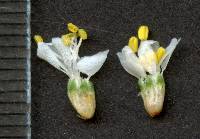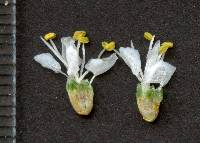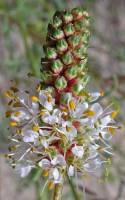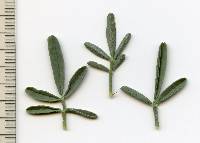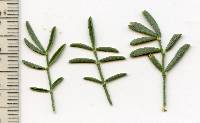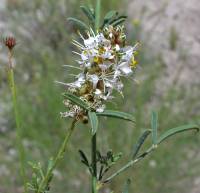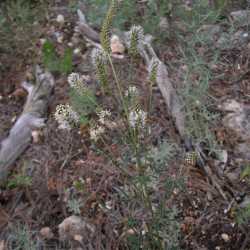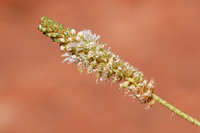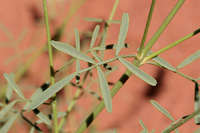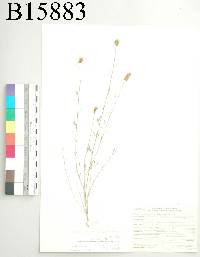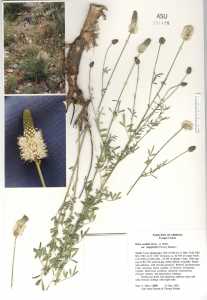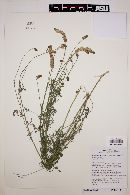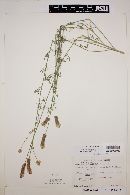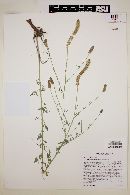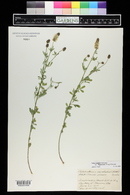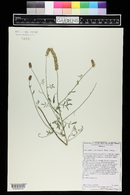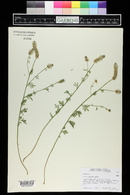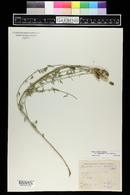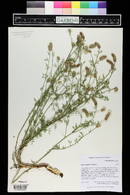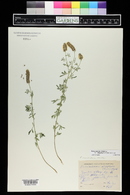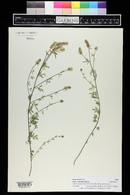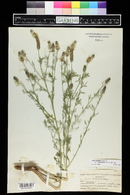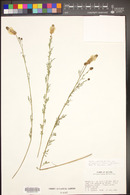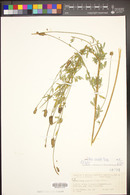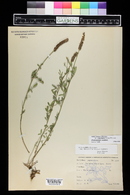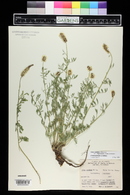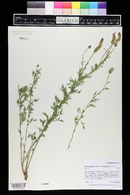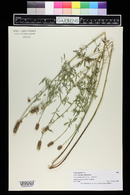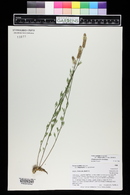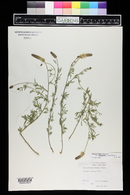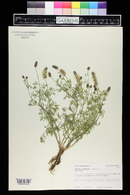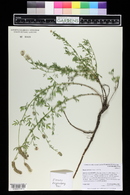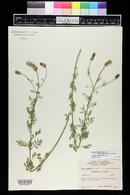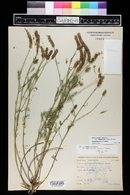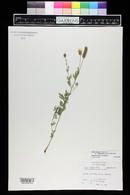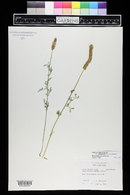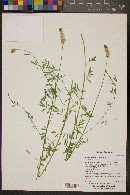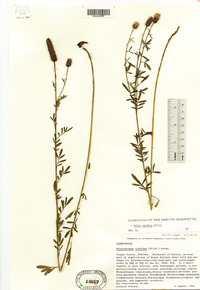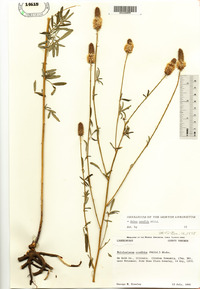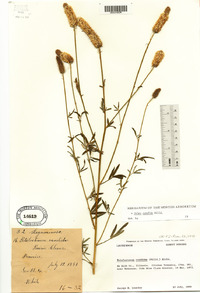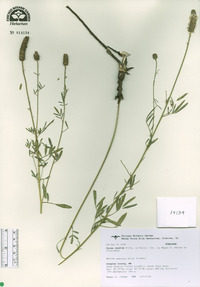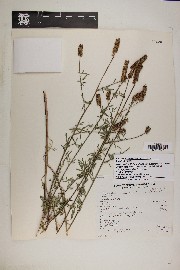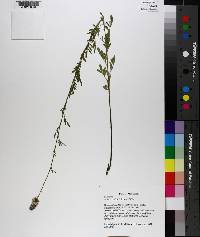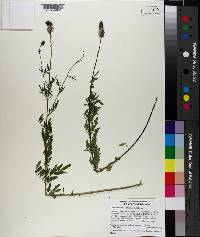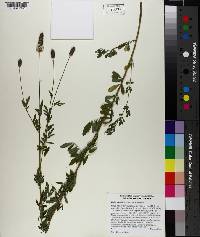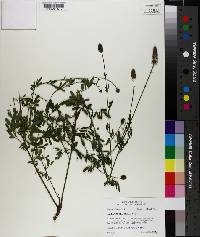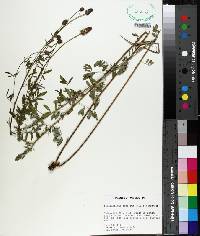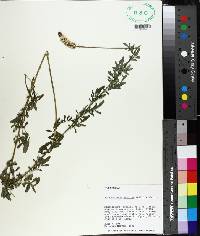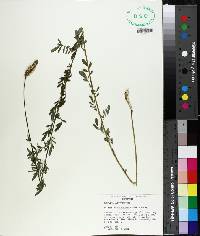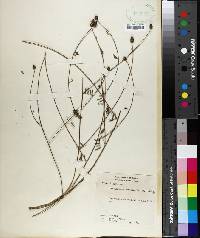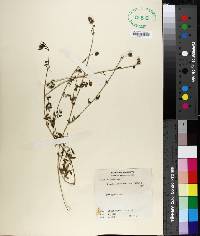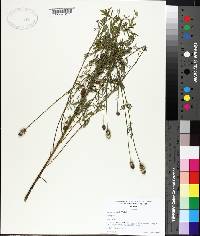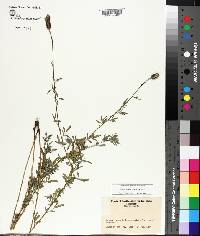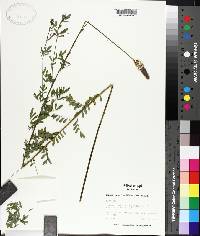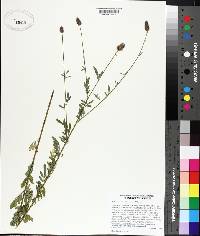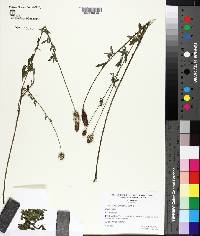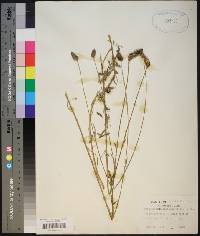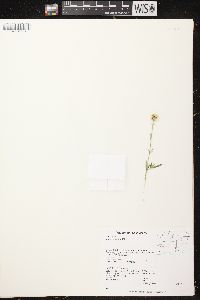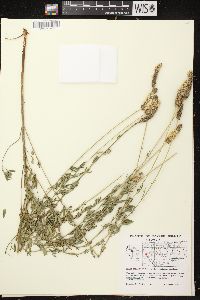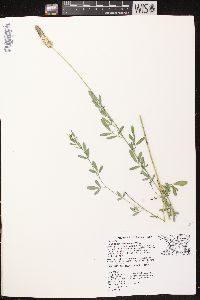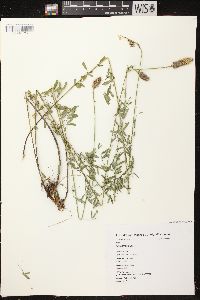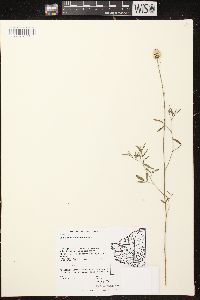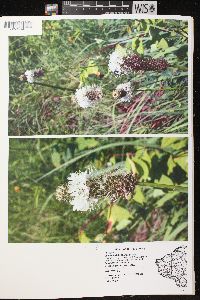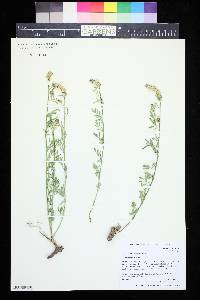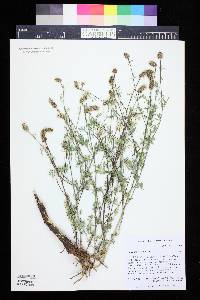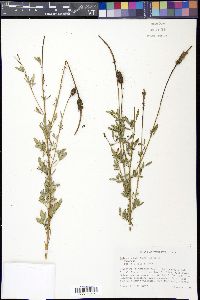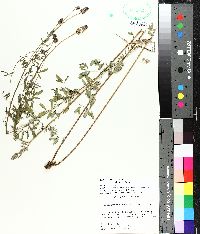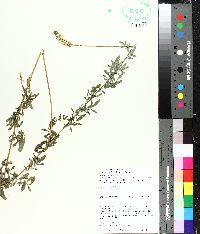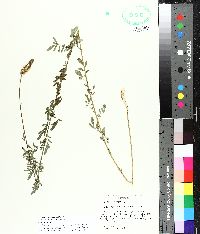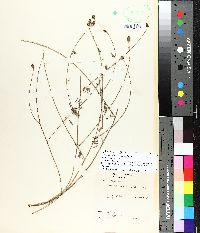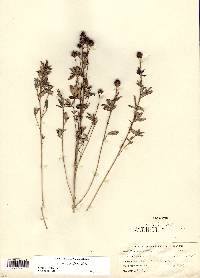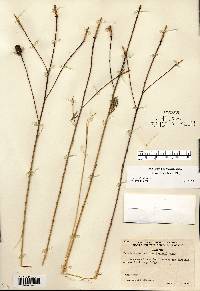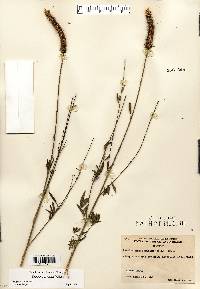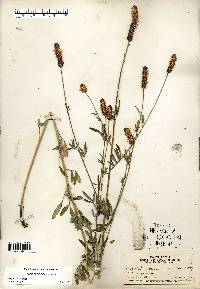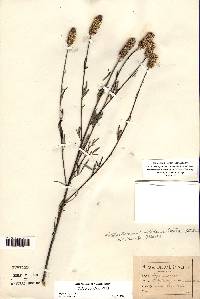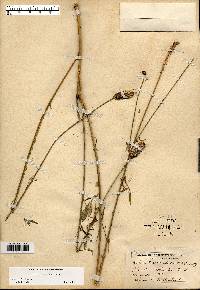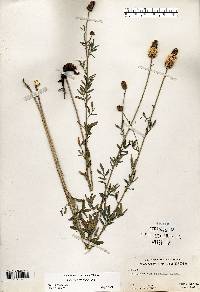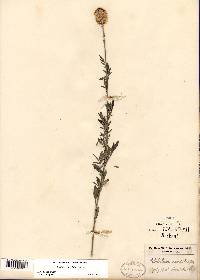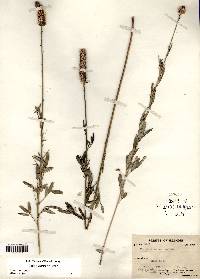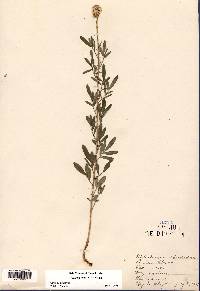
|
|
|
|
Family: Fabaceae
White Prairie-Clover, more...slender white prairieclover, white dalea, white prairieclover
[Kuhnistera candida (Willd.) Kuntze, morePetalostemon candidum (Willd.) Michx., Petalostemon candidus Michx., Petalostemon candidus var. occidentalis A. Gray ex Britton & Kearney, Petalostemum candidum Michx.] |
Kearney and Peebles 1969, McDougall 1973, Allred and Ivey 2012, Correll and Johnston 1970, MacDougall 1973 Duration: Perennial Nativity: Native Lifeform: Subshrub General: Perennial herbs, 30-100 cm tall, from a woody caudex; stems several, with ascending to spreading branches, glabrous and striate (with longitudinal stripes). Leaves: Alternate and pinnately compund, 3-5 cm long, with 5-9 leaflets per leaf; leaflets 1-3 cm long, oblong or linear-lanceolate to linear, the tips acute to mucronate coming to a short abrupt point); lower surface minutely gland dotted. Flowers: White, in cylindric clusters, 1-10 cm long, at branch tips; flowers about 5 mm long, with pea-flower morphology (papilionaceous), with a wide upper petal called the banner, two smaller lateral petals called the wings, and a boat-shaped lower petal called the keel which contains the style and stamens. Petals white; sepals 5, mostly glabrous, united at the base into a 10-ribbed tube about 3 mm long, this topped with 5 triangular teeth. Fruits: Pods small and contained within the persistent calyx; containing 1-2 seeds. Ecology: Found in grasslands, woodlands, openings in pine forest, and roadsides, from 3,000-8,000 ft (914-2438 m); flowers May-September. Distribution: The Great Plains and surrounding regions, from IN to MT and Saskatchewan, south to MS, TX, NM, and AZ. Notes: This delicately scented, white-flowered perennial Dalea is distinguished from other similar species by its mostly glabrous (hairless) leaves, stems, and flowers, and the dense cylindric spikes of flowers. There are 2 intergrading varieties in the Southwest: var. candida has broader leaflets, with most over 2 mm wide; flower spikes that remain dense after the flowers mature; and hairless calyxes. Var. oligophylla has narrower leaflets, mostly less than 2 mm wide; flower spikes that become looser after maturity, with the central axis partly visible; and calyxes that are somewhat pubescent, especually between the ribs (use your hand lens). Distinguish from D. cylindriceps based on the hairiness of the flowers; that species has copiously hairy calyxes, which is obvious without using a hand lens. Look for this species under Petalostemon candida in older texts; the recent Four Corner Flora (Heil et al. 2013) uses the synonym Dalea occidentalis. Ethnobotany: Compound of plants used for abdomen pain and as toothache medicine; roots chewed for pain; also used ceremonially. Roots eaten as a delicacy by children and sheepherders. Etymology: Dalea is named after Samuel Dale (1659-1739), an English physician and botanist; candida means shining or pure white. Editor: LCrumbacher 2012, AHazelton 2017 Erect, glabrous perennial 3-10 dm; lfls 5-9, narrow to fairly broad, flat or loosely folded, 10-35 mm; spikes 1-few, the terminal one becoming cylindric, 1.5-6 cm, more than twice as long as thick; bracts (except the lowest) surpassing the cal-lobes in bud and at least equaling them in fl, the oblanceolate body tapering to a caudate-acuminate tip; cal flanked at base by a pair of bracteoles; fls of sect. Kuhnistera, 4-6 mm, white; cal-tube sharply 10-ribbed, glabrous to shortly villous, the lobes finely ciliate; 2n=14. Dry prairies and dry upland woods; Wis. and Ind. to Tenn. and Ala., w. to Alta., Ariz., and n. Mex. June, July. Most of our plants belong to var. candida, as here described. (Petalostemon c.) The more western var. oligophylla (Torr.) Shinners (P. occidentale), with laxer spike (the axis usually partly visible in pressed specimens), somewhat smaller lfls (seldom over 20 mm), often pubescent cal-tube, and more often diffuse stems, barely reaches our range in w. Io. and w. Minn. June, July. Gleason, Henry A. & Cronquist, Arthur J. 1991. Manual of vascular plants of northeastern United States and adjacent Canada. lxxv + 910 pp. ©The New York Botanical Garden. All rights reserved. Used by permission. From Flora of Indiana (1940) by Charles C. Deam This species is rarer than the preceding [Dalea purpurea] and grows in the same habitat and usually with it. ...... Indiana Coefficient of Conservatism: C = 10 Wetland Indicator Status: N/A Indiana populations belong to var. candida. |
|
|
|
This project was made possible in part by the Institute of Museum and Library Services [MG-70-19-0057-19].
Powered by Symbiota

